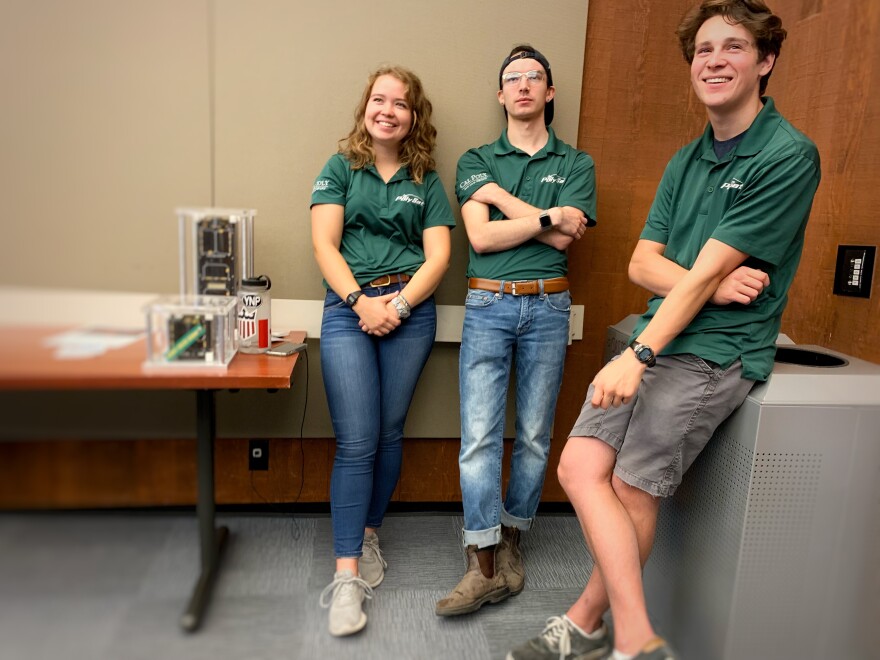When NASA’s InSight mission to Mars took off from the Central Coast’s Vandenberg Air Force Base six months ago, two little satellites piggybacked along for the ride. They’re called CubeSats, and they’re about the size of briefcases. Cal Poly students in San Luis Obispo had a hand in their departure from earth and the data they are sending back from Mars.
Kate Parkinson and few other students stood in the back of a conference room in Cal Poly’s Student Union and watched the final minutes of InSight's decent to Mars Monday afternoon. Parkinson held her hands over her mouth as a NASA operator counted down the approaching distance to the Red Planet. Everyone clapped when NASA engineers announced InSight had successfully landed.
“My class starts right now, but this is a little bit more important than missing 10 minutes of class,” Parkinson said.
Parkinson is a member of PolySat, a student-run, a multi-discipline research lab on the Cal Poly campus. The 20-year-old aerospace major said there are about 80 students in the program.
“[We’re] one of the bigger CubeSat university programs in the nation,” Parkinson said. “Which is helped by the fact [CalPoly is] where the CubeSat standard started.”
In 1999, CubeSats were developed at Cal Poly to test out new, smaller space technologies. Since, more than 800 have been launched into space. The are little, blocky satellites that aren’t too expensive to build and send up - only a few million dollars, rather than a price tag in the hundreds of millions. Most CubeSats are used for small space data experiments that aren’t worth the cost of major satellite launches.
NASA’s Jet Propulsion Laboratory built the CubeSats for this Mars mission. Their names are MarCO-A and MarCO-B, for Mars Cube One. Earlier this year, Cal Poly students got the chance to work on the device that deployed them into space during the launch. And for the past six months, PolySat lab students have been tracking and interpreting the data from the CubeSats as InSight traveled to Mars.
19-year-old computer engineering major Ryan Statz said he got to interpret the raw data, or telemetry, relayed from the CubeSats back to earth.
“I wrote some software that goes through and looks at the data and puts it in a readable format and aids in their operations,” Staz said. “ Looking at the CubeSats: are they healthy? Basically, daily checkups.”
“I worked on correlations between the satellite clocks and earth time because there are different delays,” said Kate Parkinson. "It was an awesome experience, to be able to say I worked on and helped with data from satellites going to Mars.”
A pretty big deal for a Parkinson’s and Statz’ resumes. And for science. CubeSats have never been outside earth’s orbit.
“It’s the first time CubeSats have been launched interplanetary,” Parkinson said. “It was honestly a question if they would make it to Mars alive.”
The CubeSats did survive and successfully relayed InSight landing information back to Earth Monday.
With their mission complete, the CubeSats will soar past Mars, deeper into space, relaying any data they gather back to Earth, for long as they can.






